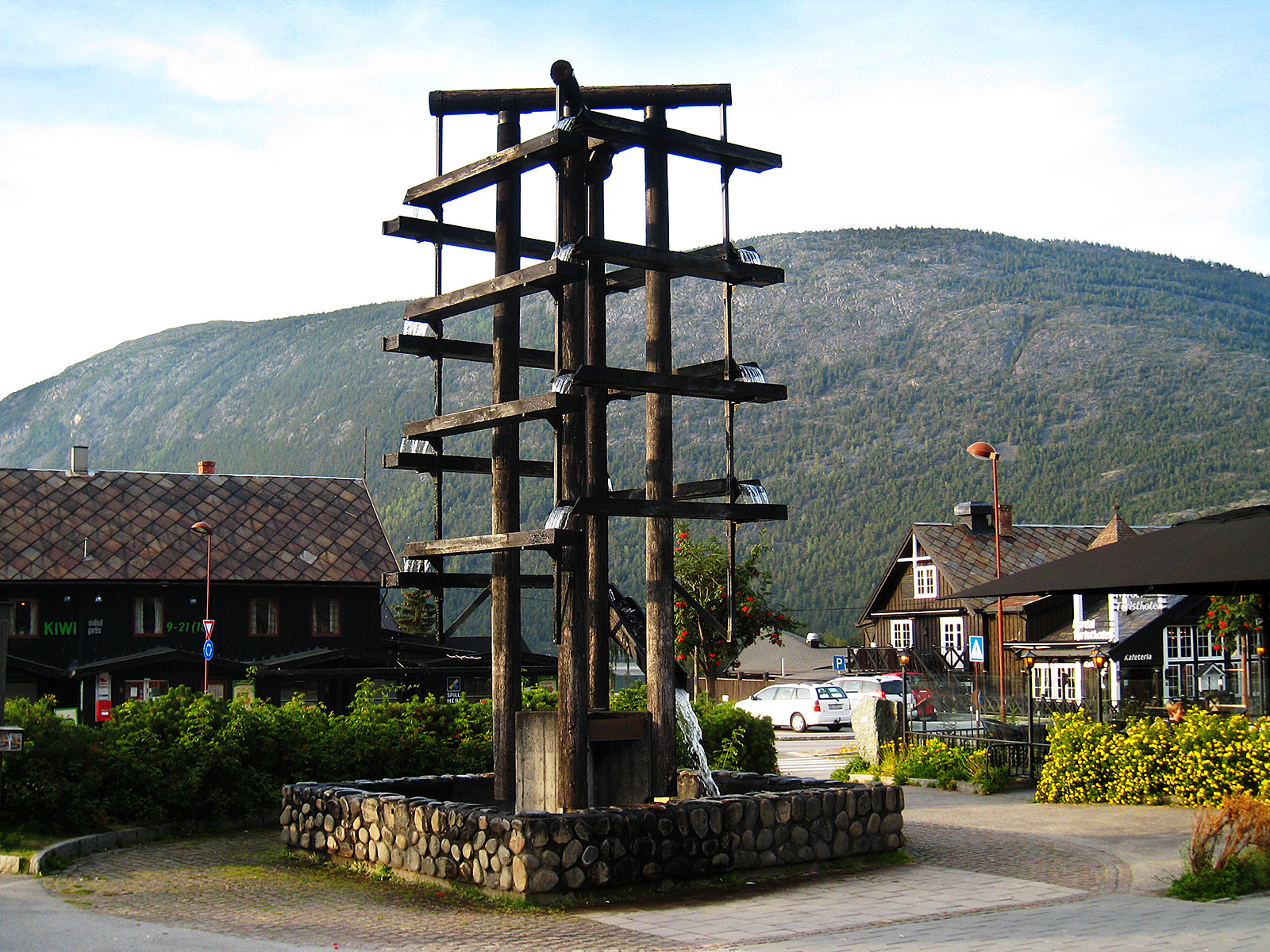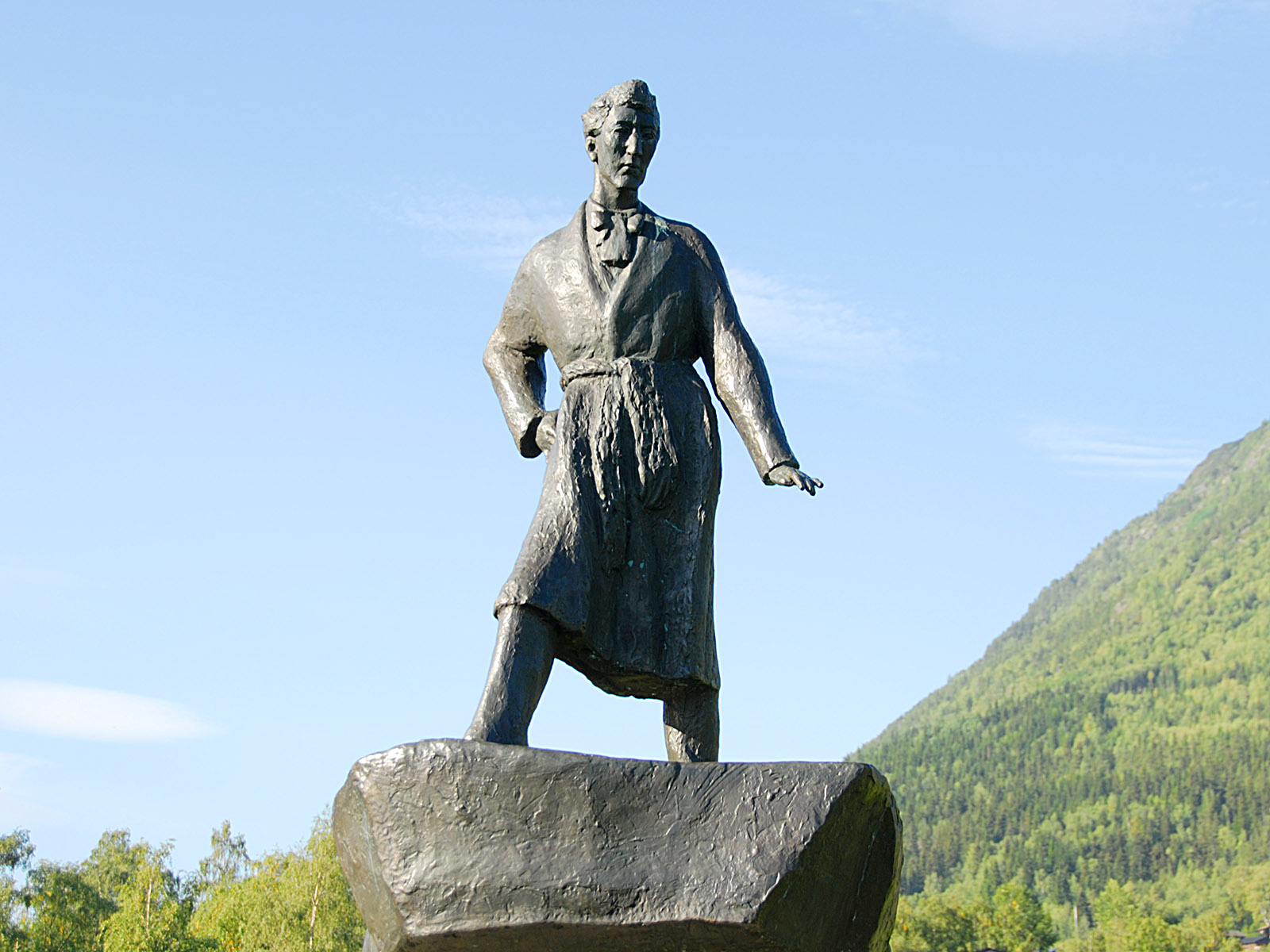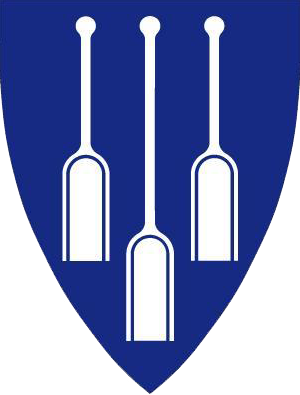
Lom, together with Skjåk, its neighbour to the west, and Lesja a bit further north, is the dries district in the country. Irrigation is therefore crucial for the growth. These days water is pumped up from lakes and rivers, but before electric power came, it was not that easy. While little rain finds its way down to the valley, the precipitation is much higher in the adjacent mountains. In the old days they dug and built canals winding through the mountains to supply the farms with water. To spread the water they used special wooden spades as depicted in Lom's coat of arms below.
This work of art, standing in the centre of Lom, symbolizes the old watering system. Water is released at the top and flows down through 16 open ducts. Incidentally, Lom has been judged (2005) to have the best drinking water in the country. Close by it's possible to taste it and fill your bottle(s).
(2015-09-10)

Olav Aukrust (1883–1929) was born on the farm Aukrust a few kilometres up the valley Bøverdalen. He was a fantastic poet. The Lom dialect may be the richest in this country, and the poet used it like nobody else. Admittedly, people from other parts of the country may occasionally need translation. He also worked as a teacher. Unfortunately he suffered from tuberculosis of the joints and died too early. This statue near the Lom church was made by Dyre Vaa (1955).
(2015-09-11)

The Lom stave church built about 1160. When it is recently impregnated with tar it looks rater dark. Every year it is visited by thousands of tourists, wearing down especially the floor.
(2008-09-13)

The Lom coat of arms
